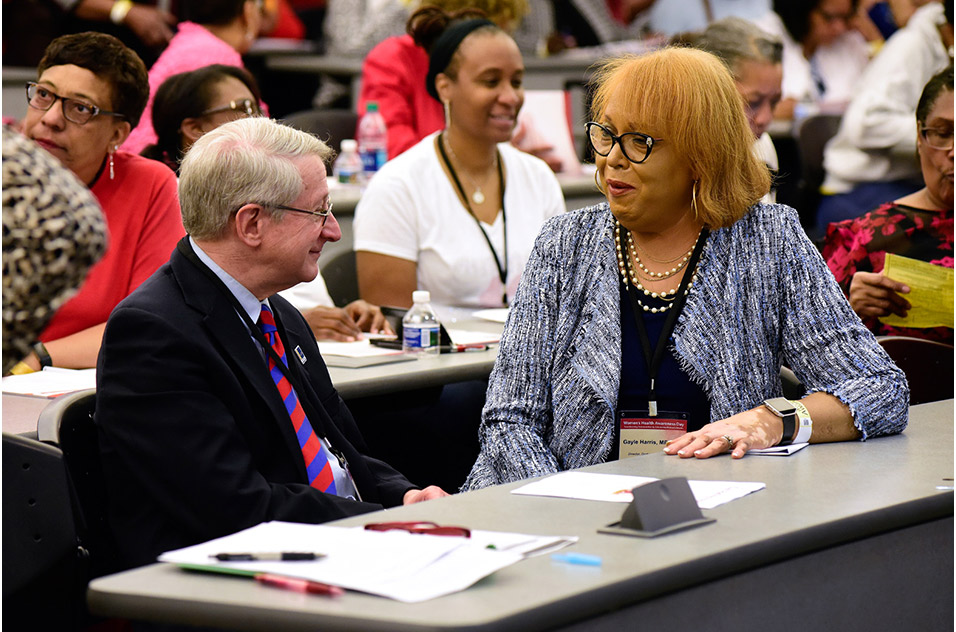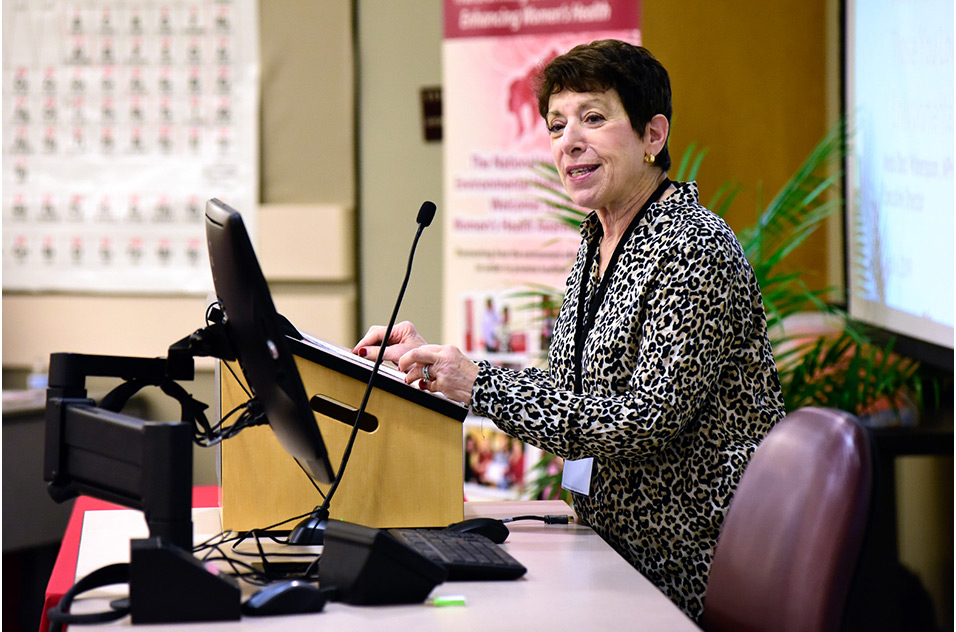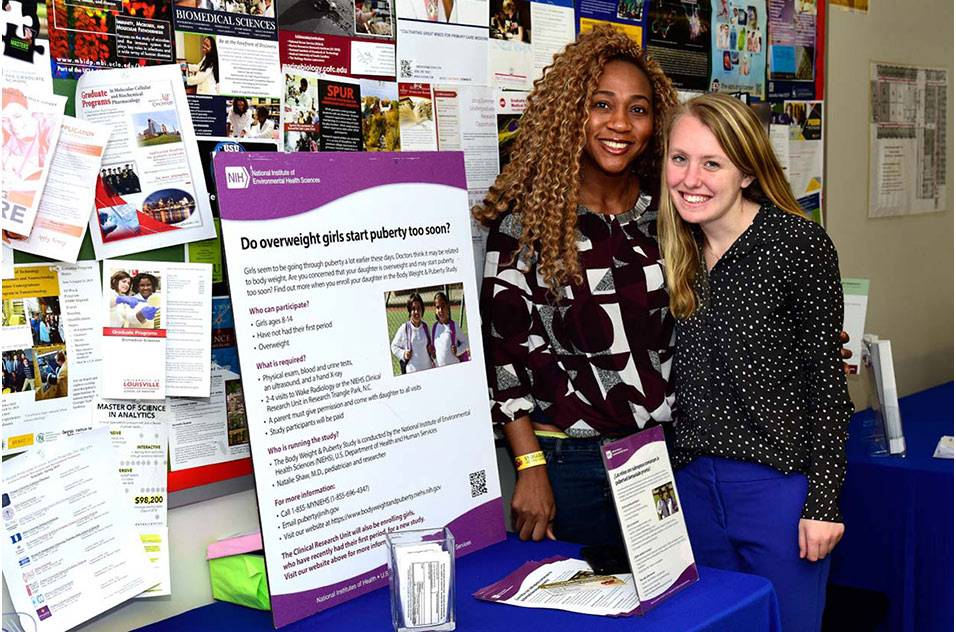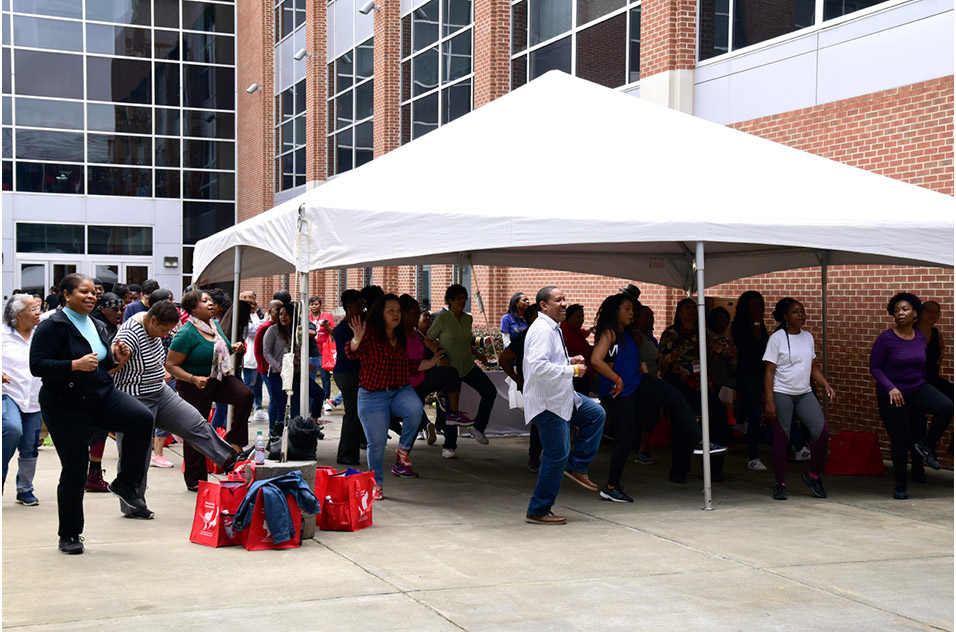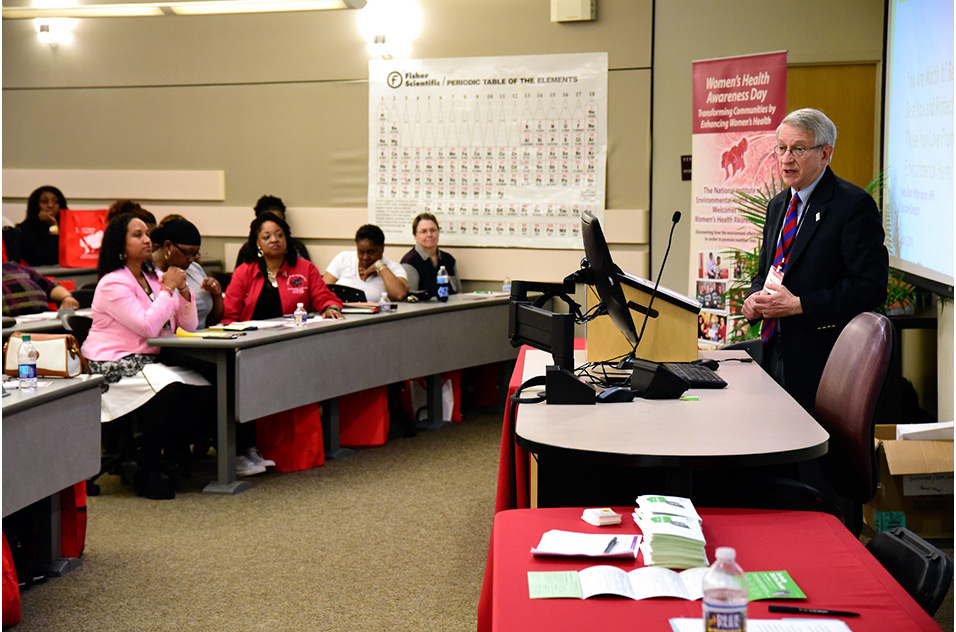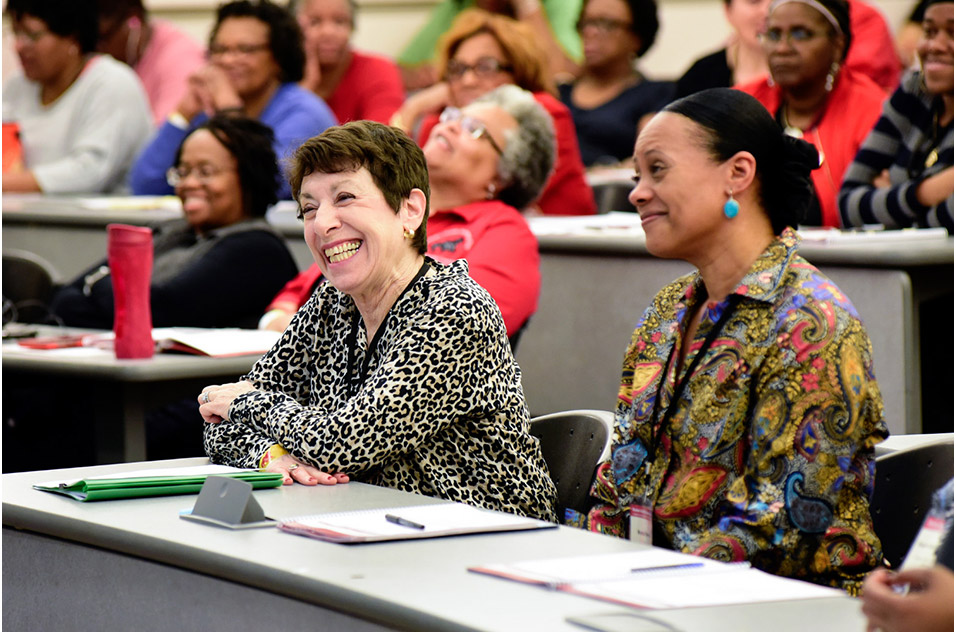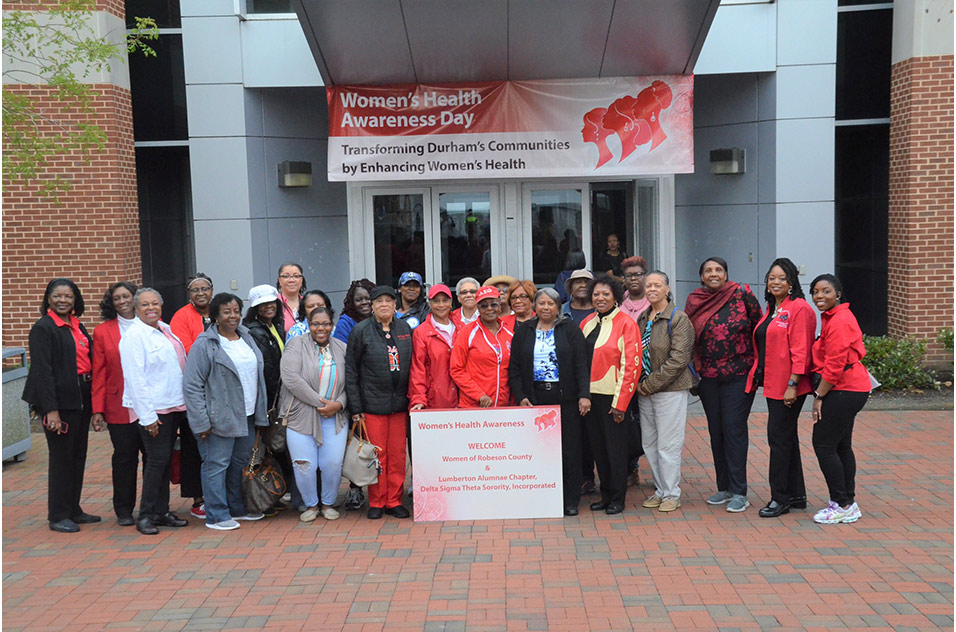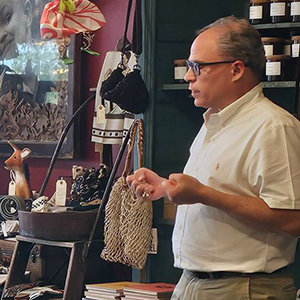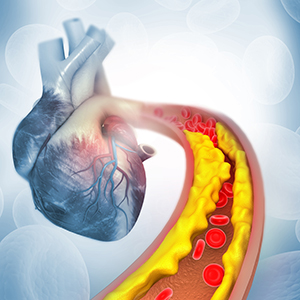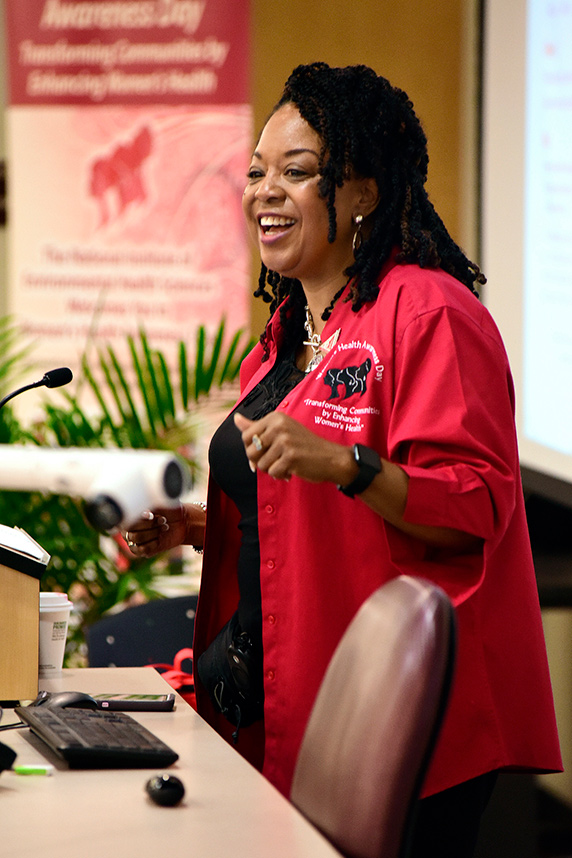 Packenham encouraged attendees to get screened and attend sessions that would help them understand the results they received. (Photo courtesy of Steve McCaw)
Packenham encouraged attendees to get screened and attend sessions that would help them understand the results they received. (Photo courtesy of Steve McCaw)More than 1,000 women and men from across North Carolina gathered for the fifth annual Women’s Health Awareness (WHA) conference at North Carolina Central University in Durham. This year’s event offered 33 education sessions,15 different screenings, and more than 45 exhibitor health resource booths.
The crowd was welcomed by Joan Packenham, Ph.D., director of the NIEHS Office of Human Research Compliance. Packenham founded the event and serves as the chair of the steering and planning committee.
Her remarks followed the day’s energetic launch with a morning warmup exercise led by Willa Robinson Allen, from the Durham County Department of Health. This activity, part of WHA since the inaugural event in 2015, extends the “Let’s Move” campaign by former first lady Michelle Obama, J.D.
The NIEHS Clinical Research Branch is the lead sponsor of WHA. The Durham Alumnae Chapter of Delta Sigma Theta Sorority, Inc., Durham Alumnae Delta House, Inc., and Department of Health Education at North Carolina Central University co-sponsored the event.
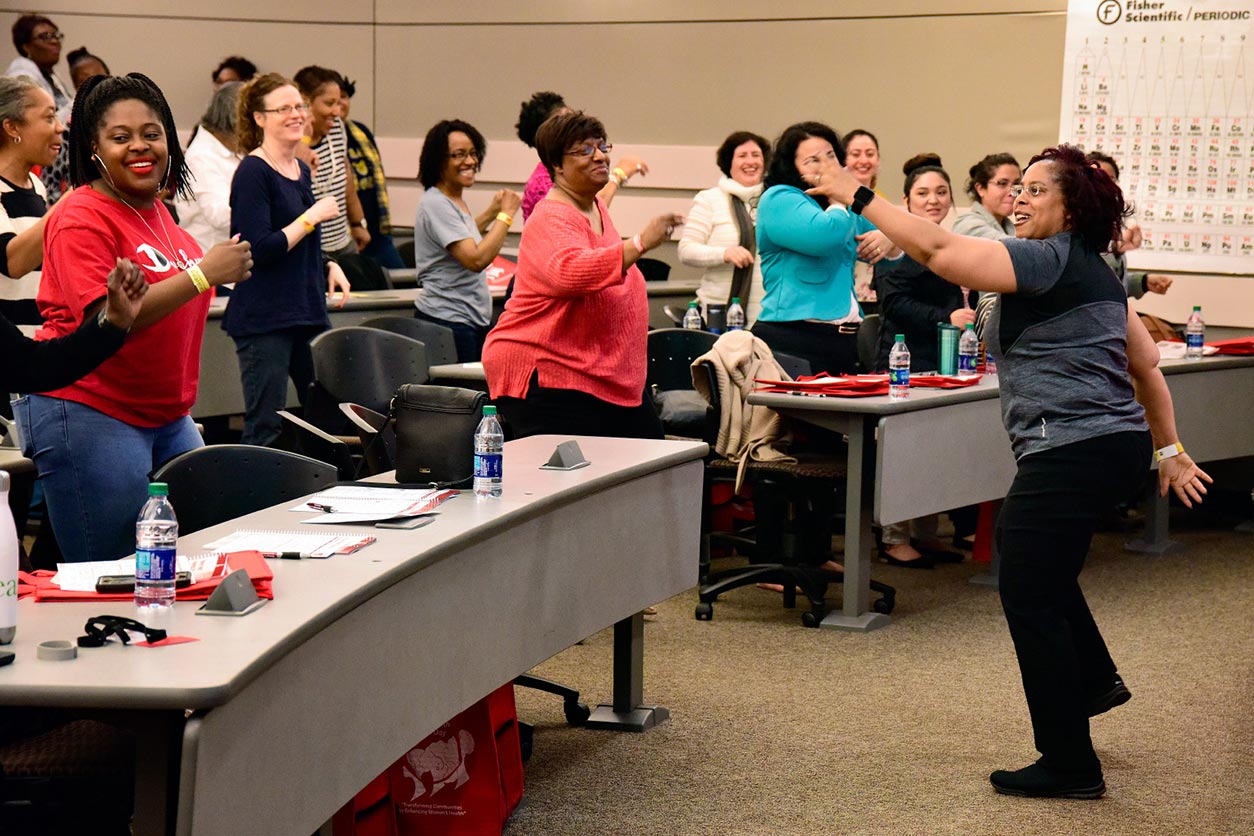 Allen led the group exercise to kick off the day. (Photo courtesy of Steve McCaw)
Allen led the group exercise to kick off the day. (Photo courtesy of Steve McCaw)Survey guides offerings
For WHA 2018, the NIEHS Office of Human Research Compliance developed a questionnaire to survey participants to better understand how the environment affects women’s health and to learn their top health concerns. Obesity ranked highest, followed by hypertension.
Packenham said she was surprised by the third most common concern — oral disease. So, on top of the usual dental screening room, organizers added the N.C. Men’s Baptist Mobile Unit to increase dental services, education, and capacity.
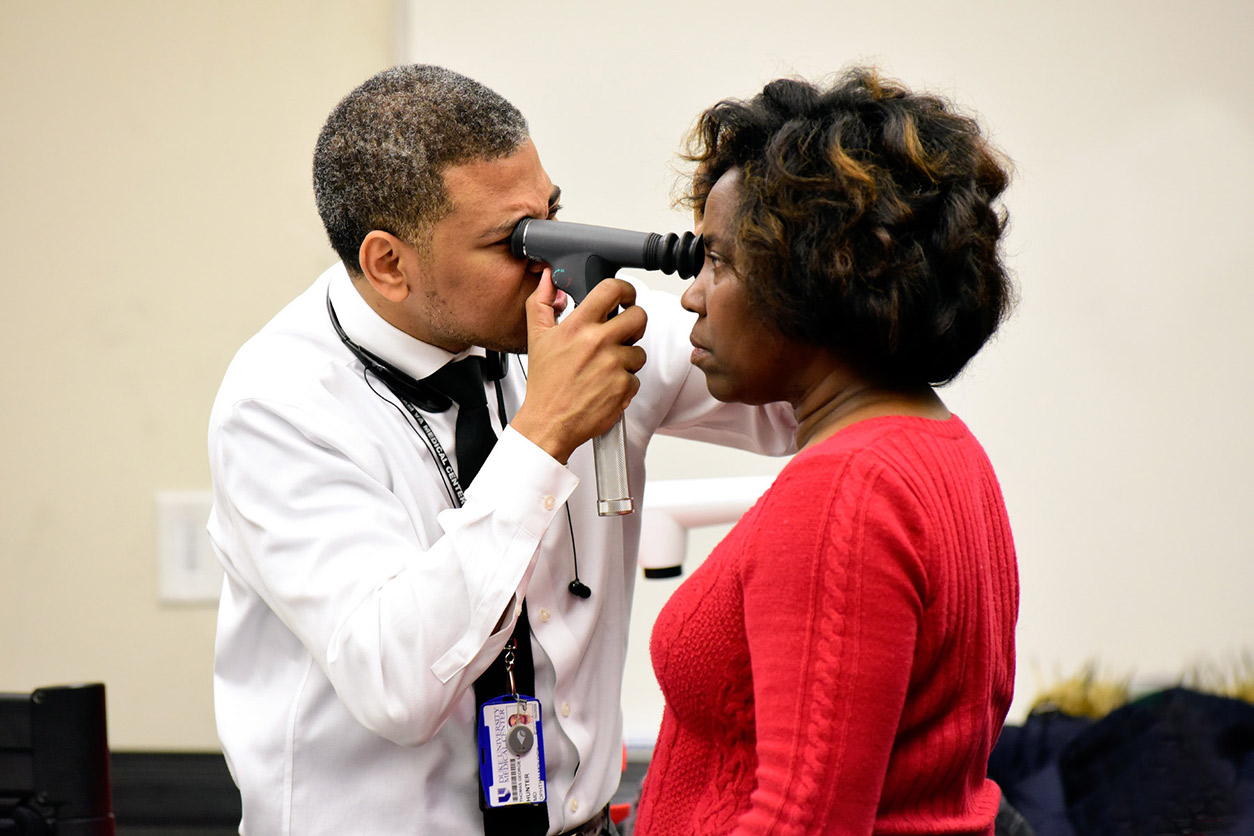 Free health screenings, such as the glaucoma checks offered by Thomas Hunter, M.D., Duke University Health System, are a hallmark of the community health event. (Photo courtesy of Steve McCaw)
Free health screenings, such as the glaucoma checks offered by Thomas Hunter, M.D., Duke University Health System, are a hallmark of the community health event. (Photo courtesy of Steve McCaw)When the planning committee found that 43% of participants reported discrimination as their number one health concern, they added a session on behavioral health. The session focused on understanding environmental influences on emotions and mental health, and what women can change to live a life of wellness and joy. There was also a session on mindfulness and stress relief.
A new research tool this year was an audio booth for women to share personal experiences concerning their environment and health. The recordings will be used to shape additional research questions and better understand community concerns.
Chemical connections
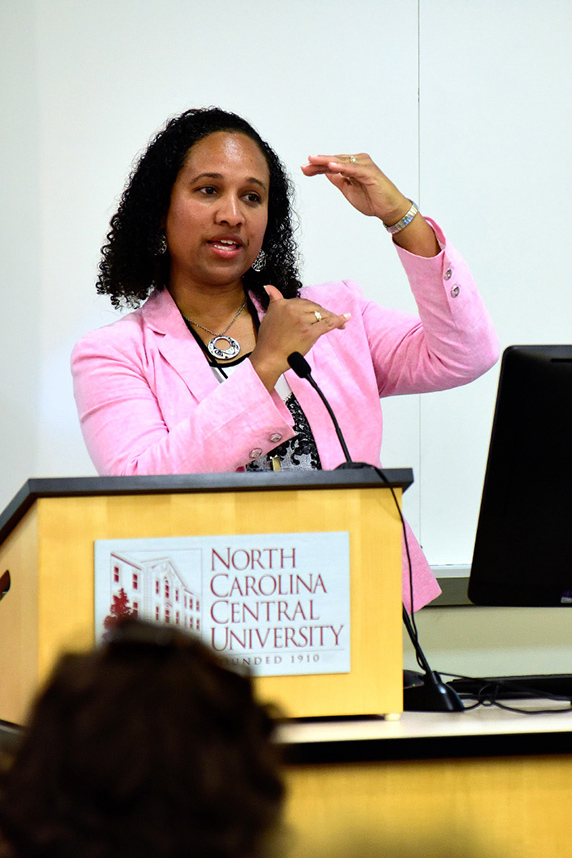 Witherspoon emphasized the importance of reducing chemical exposure in children. (Photo courtesy of Steve McCaw)
Witherspoon emphasized the importance of reducing chemical exposure in children. (Photo courtesy of Steve McCaw)WHA brought together medical professionals and scientific experts from the Research Triangle Park area and around the country. Keynote speaker Nsedu Obot Witherspoon, executive director of the Children’s Environmental Health Network, highlighted the importance of preventing harmful exposure to chemicals in children, one of our most vulnerable populations.
Retired NIEHS scientist Jerry Heindel, Ph.D., and Packenham chaired two sessions on preventing exposure to environmental chemicals. Bruce Blumberg, Ph.D., from the University of California, Irvine, led with his research on chemical exposure and obesity. Blumberg shared tips for reducing exposure to chemicals in diet and consumer products.
Robert Sargis, M.D., Ph.D., from the University of Illinois at Chicago, led a session on how environmental toxicants promote the development of metabolic diseases, such as obesity and diabetes.
Heindel stressed the importance of these sessions. “Obesity and diabetes are so prevalent in women, and especially in black women, that we thought this was a good opportunity to expose them to the importance of chemicals and these diseases, and to explain how to reduce exposure and improve health,” he explained.
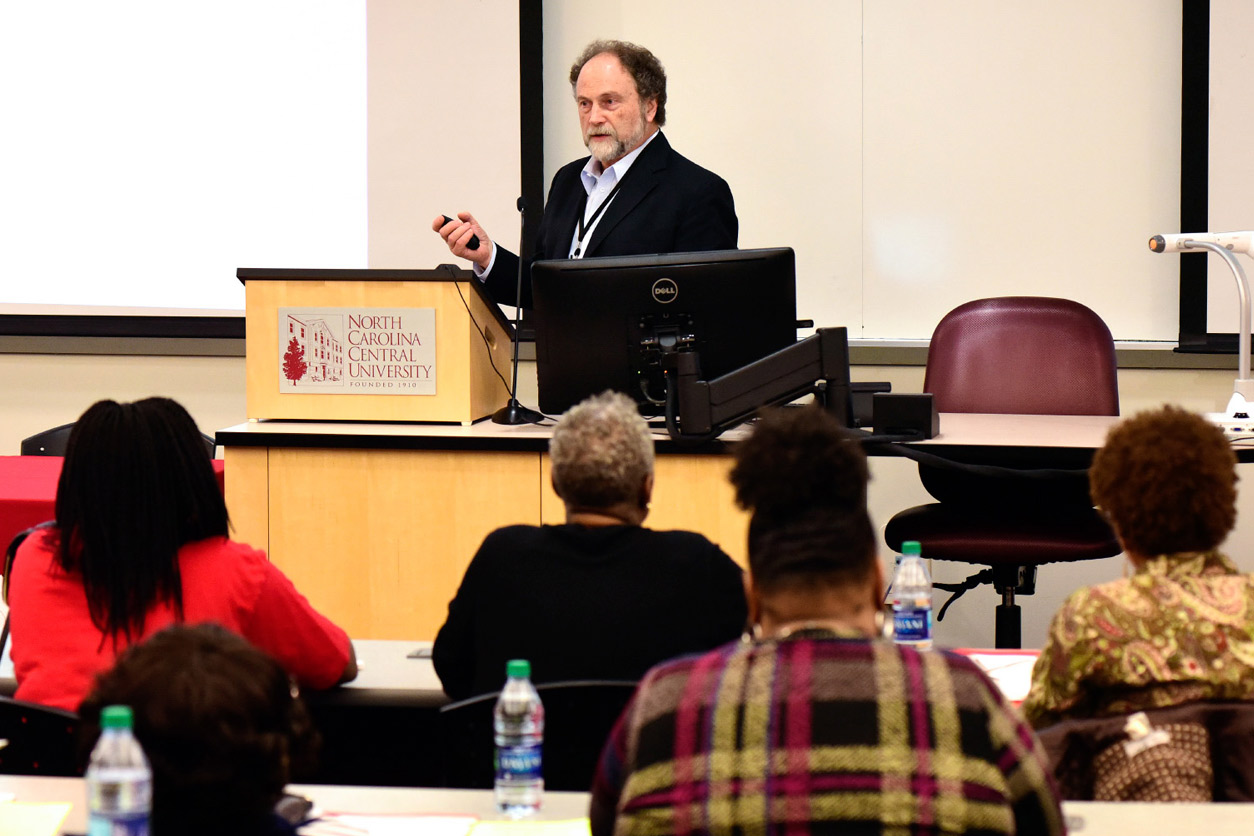 Blumberg shared tips for reducing exposure to environmental chemicals in the diet and common consumer products. (Photo courtesy of Steve McCaw)
Blumberg shared tips for reducing exposure to environmental chemicals in the diet and common consumer products. (Photo courtesy of Steve McCaw)First responders and opioids
Sharon Beard, industrial hygienist in the NIEHS Worker Training Program co-led a session with Sireatta Atwater, R.Ph., Staff Pharmacist, CVS/Pharmacy District 2003, on the status of the opioid epidemic in North Carolina and current work at NIEHS to protect first responders when they arrive at the scene of an overdose.
Beard’s message revolved around the availability of resources for affected families. “We wanted to make sure the public had an opportunity to access these resources and share with their families because this is an issue impacting North Carolina,” she said.
(Stephani Kim, Ph.D., is an Intramural Research and Training Award postdoctoral fellow in the NIEHS Perinatal and Early Life Epidemiology Group.)





